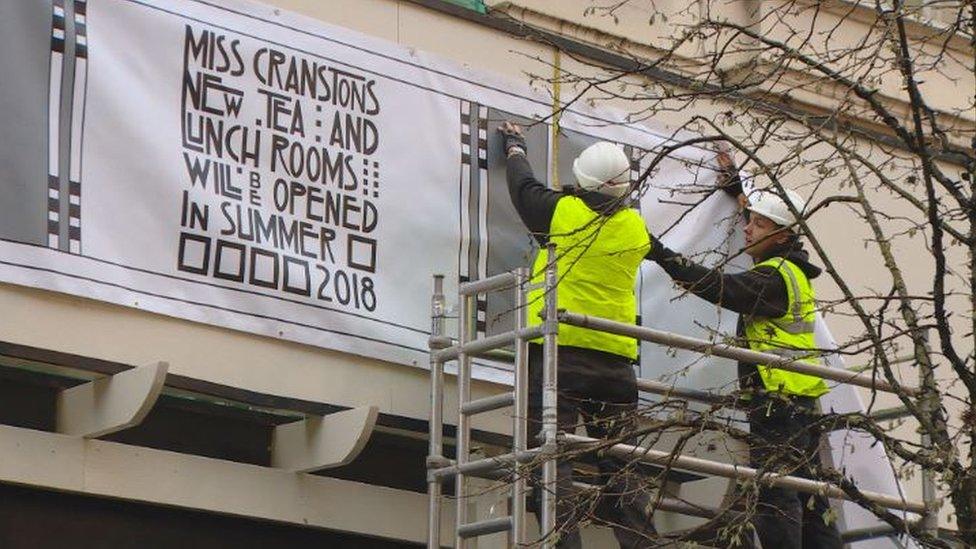The tea rooms that brought Mackintosh back to life
- Published
Glasgow businesswoman Celia Sinclair finally opens the Willow Tea Rooms
One woman has been on a mission to bring Charles Rennie Mackintosh's most famous tea rooms back to life.
The week before the fire that destroyed his Glasgow School of Art, the 150th anniversary of the designer's birth was celebrated with a preview of the £10m restoration of the Willow Tea Rooms.
While the art school was seen by experts as the finest achievement of Glasgow's best-known and visionary architect, many of the public will view the tea rooms as the place that defined the Mackintosh style.
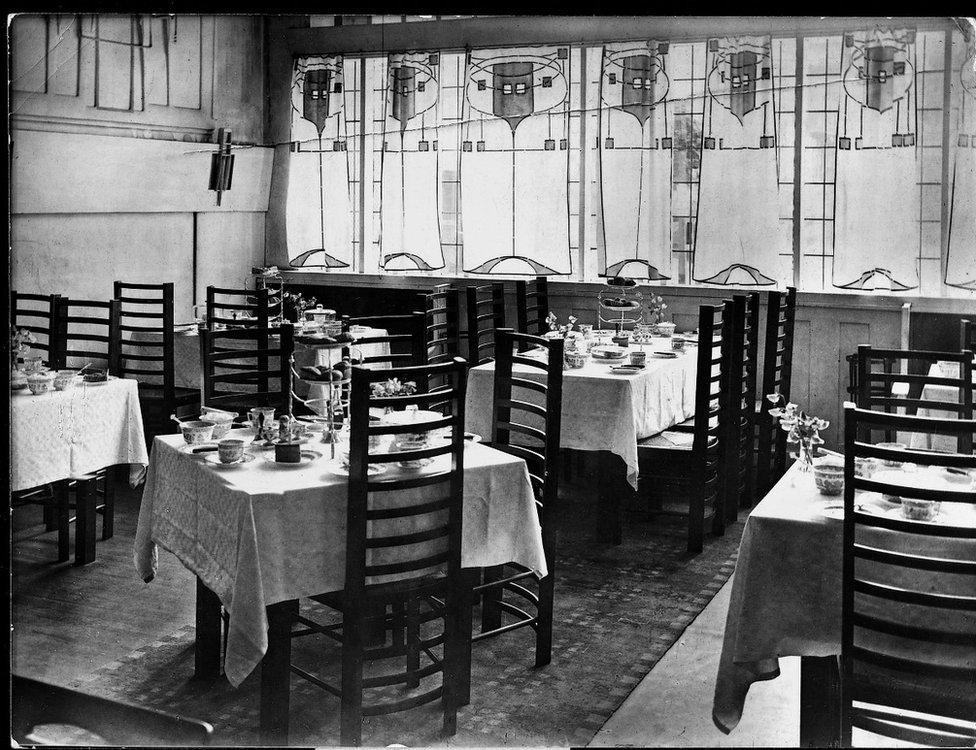
The front salon of the original Willow Tea Rooms

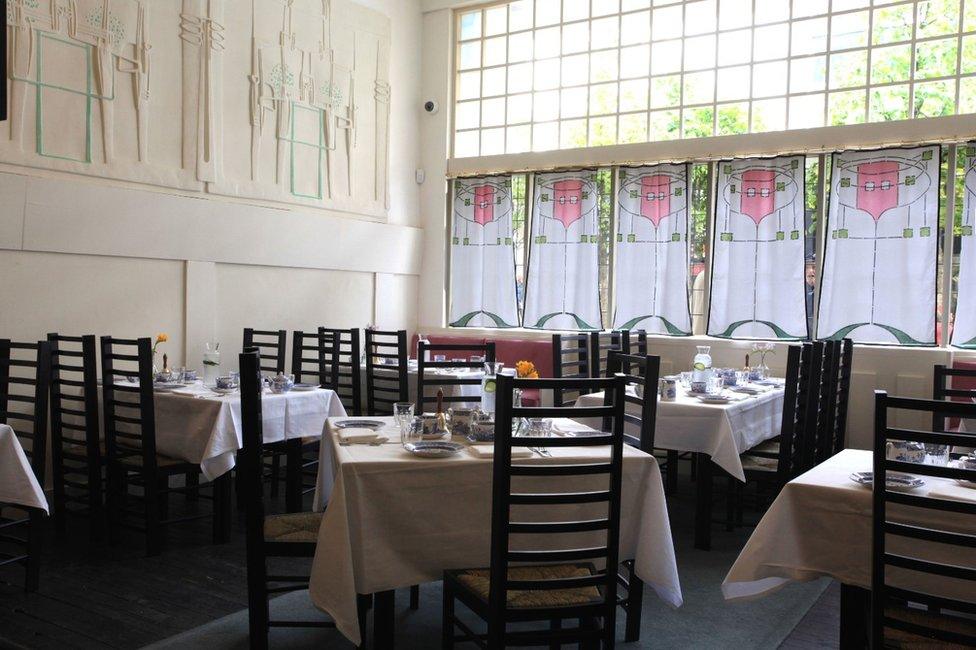
The front salon in the recreated Willow tea rooms

The original 1903 Willow Tea Rooms were designed in their entirety by Mackintosh and he had total control inside and out.
He remodelled the exterior of the 1860s tenement block and oversaw the interior decorative elements, right down to the design of the cutlery and the uniform of the waitresses.
However, Glasgow was largely indifferent to the genius in its midst and it was businesswoman Kate Cranston, the tea room queen, who received the plaudits.
In Europe, Mackintosh and his wife, artist Margaret Macdonald, were lauded by the avant-garde Secessionist movement but in his home city there were few patrons as keen as Miss Cranston to allow the "design dictator" to fulfil his creative vision.
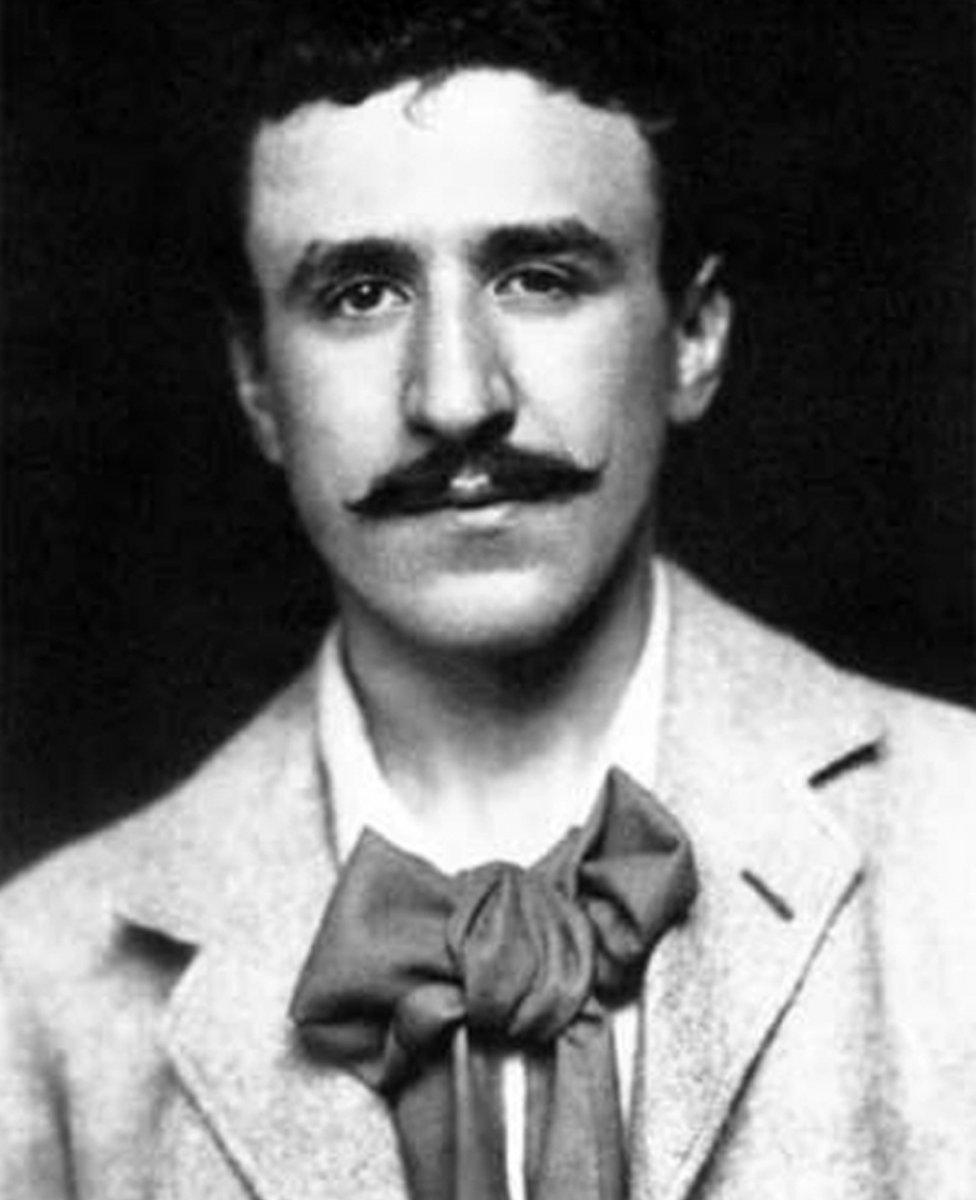
Charles Rennie Mackintosh liked to have total artistic control of a project

The tea rooms were praised for being "exceedingly artistic and highly decorative".
The "Salon de Luxe" on the first floor was said to be "simply a marvel of the art of the upholsterer and decorator".

One of the designs recreated for the interior of the tea rooms

The artistry of the tea rooms was admired but Mackintosh was largely unappreciated in Britain during his lifetime.
As fashions changed Mackintosh's Sauchiehall Street tea rooms underwent various transformations, including being hidden behind the bridal wear of a department store.
There were various attempts to revive the rooms and restore them to their former glory but four years ago the building was up for sale and its future looked bleak.
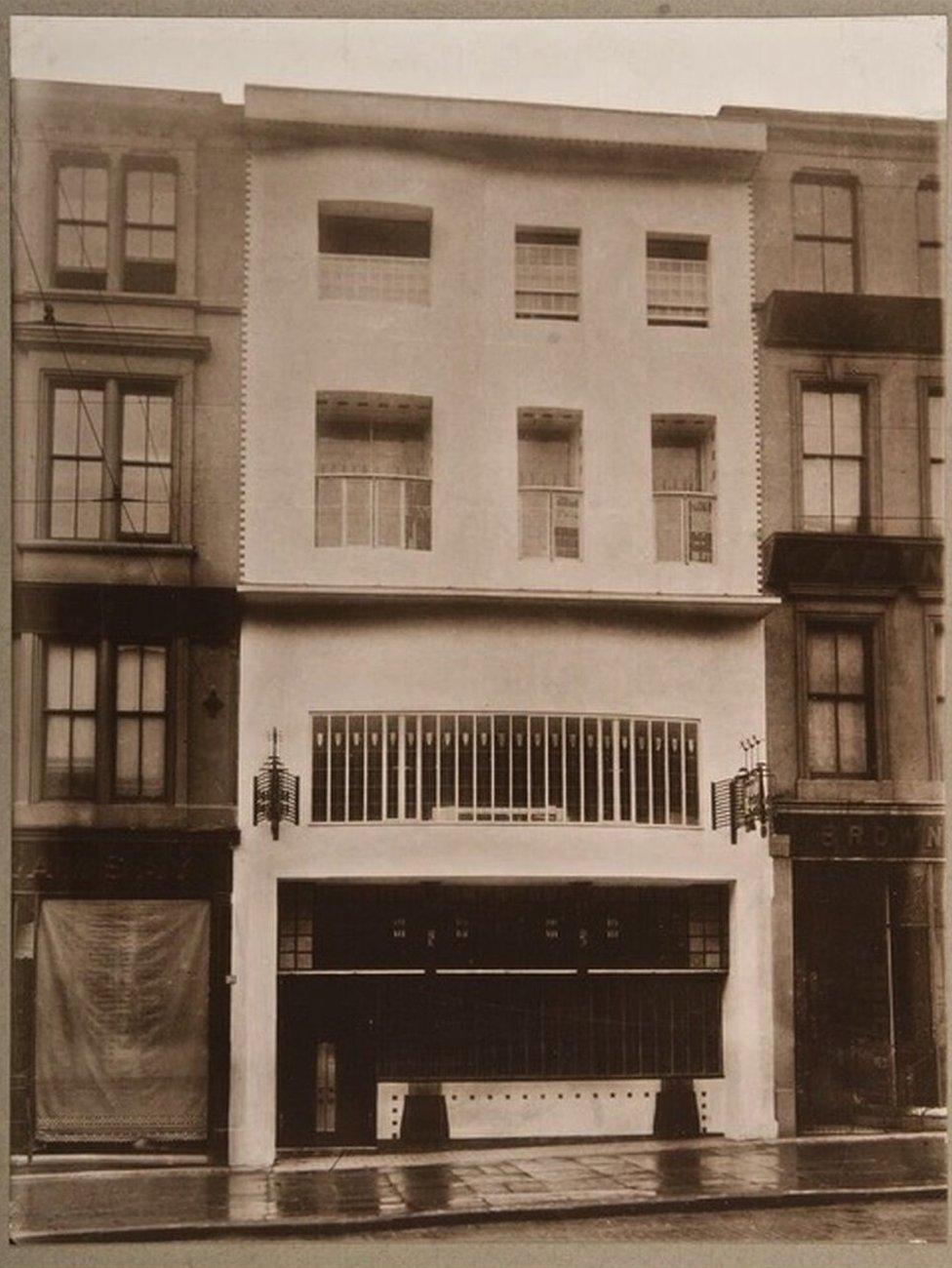
A black and white image of how the tea rooms would have looked

Enter Glasgow businesswoman Celia Sinclair, who made it her mission to bring the tea rooms back to life.
"I really didn't want to lose the Willow Tea Rooms," she tells the BBC documentary Mackintosh's tea rooms.
"I remember going in there as a little girl. I thought it was a magical place."
"We've lost so much of our heritage that I didn't want to see this going.
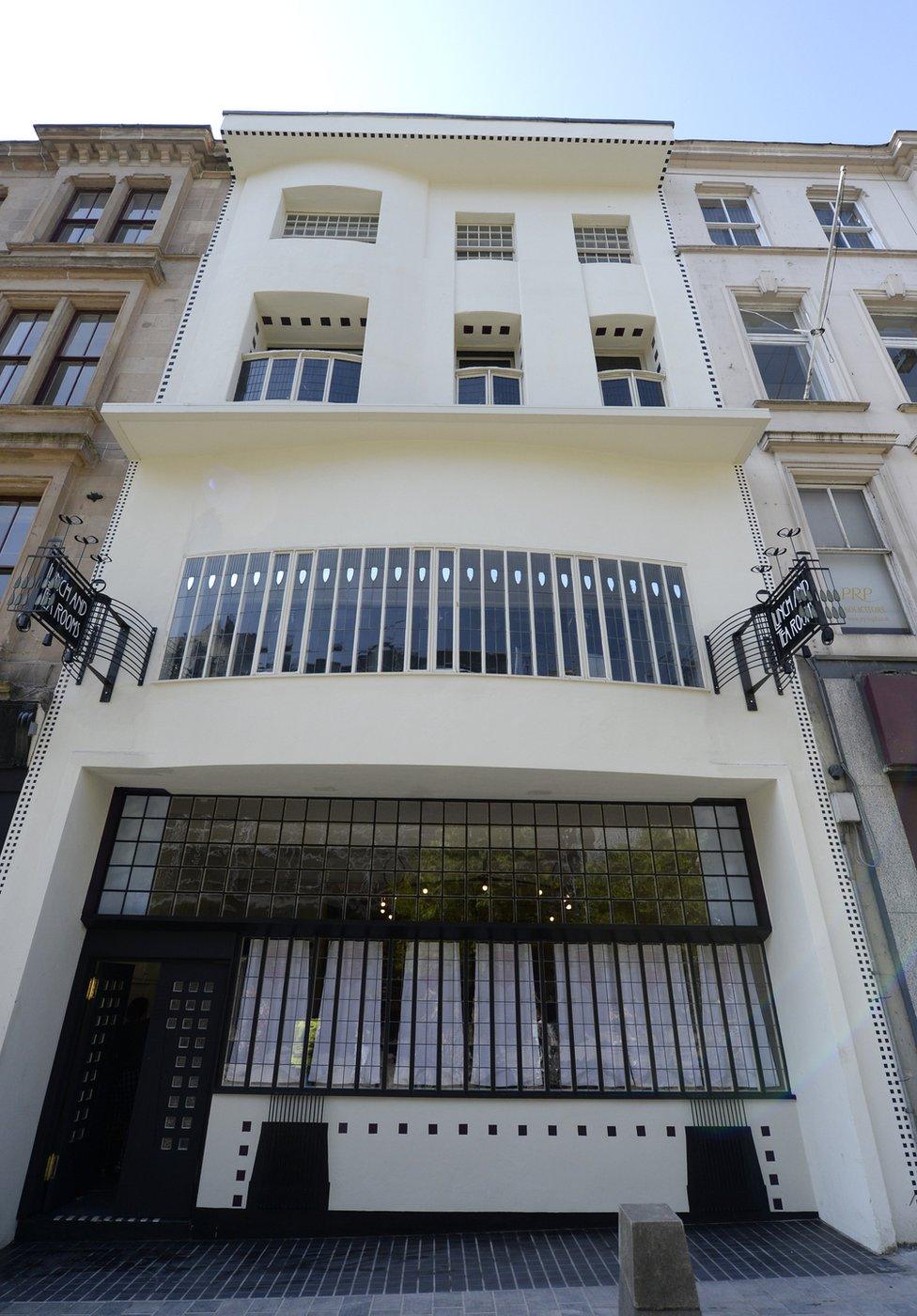
The exterior was brought back to how it would have looked in 1903

"I thought 'I have to do something' and so I did."
Celia, who made her money in commercial property, bought the building and set up a charitable trust to own and restore it.
She then embarked on an effort to raise £10m, including £3.5m from heritage lottery funds, and organise a total renovation of the tea rooms before the Mackintosh 150 celebrations in June.
For Celia and the expert panel she assembled every element of the restoration had to be exactly as Mackintosh had intended.
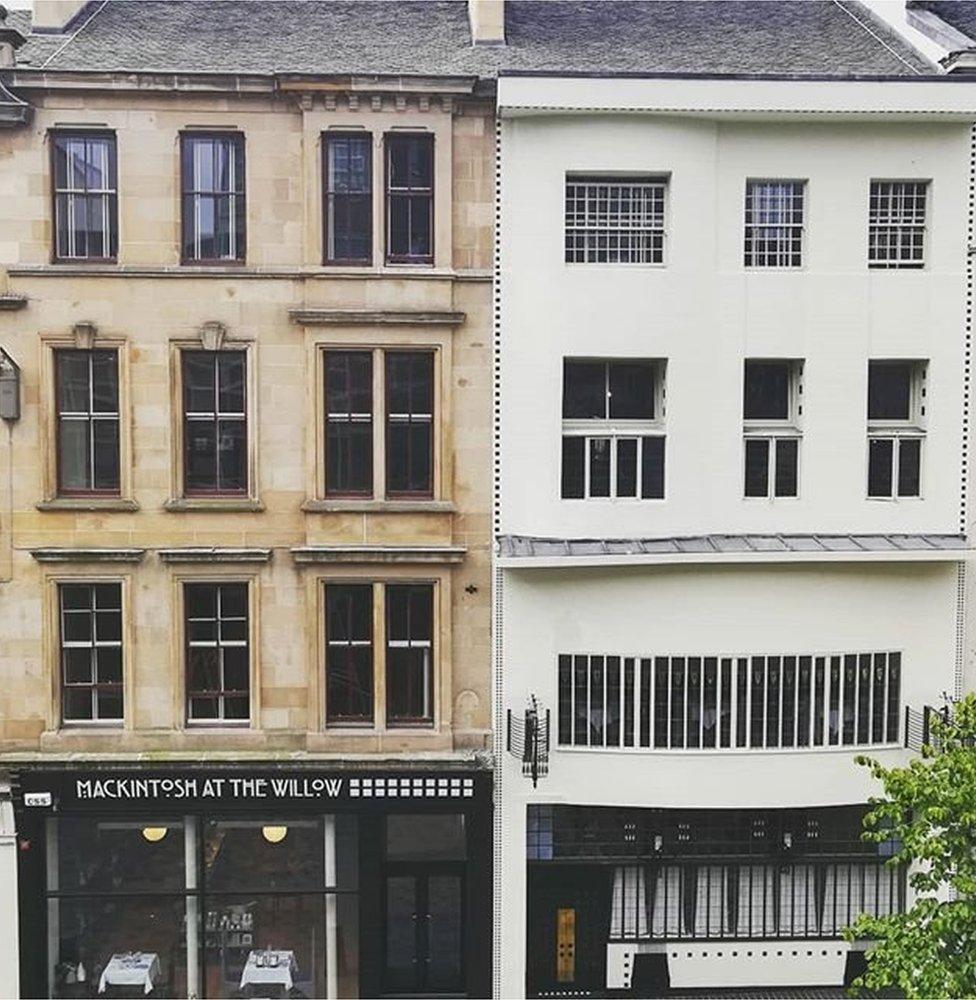
NOW: The building on the right (217 Sauchiehall Street) has been restored to how Mackintosh remodelled it in 1903

All the furniture, including the famous high-backed chairs, would be hand-made in the same way it would have originally, using the methods that would have been used at the time.
Old black-and-white photographs were studied to ensure the panelling, the chandelier, the carpets and the drapes were all recreated exactly as they had been in 1903.
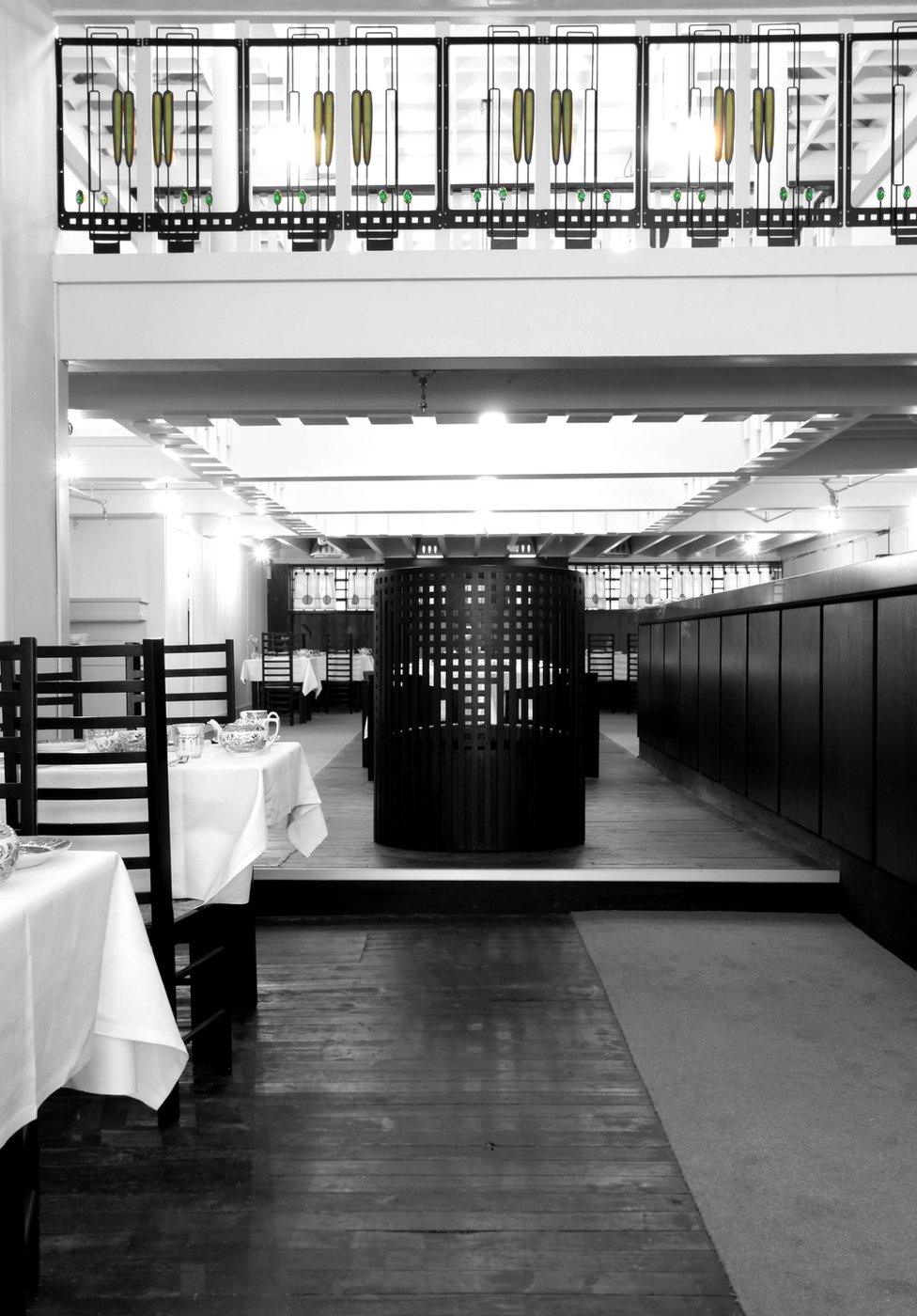
A view of the salon from the back

Celia tells the documentary: "There is such interest in this building it has to be done absolutely correctly.
"They say only God is perfect but we are doing our best to get as near to that as we can.
"It has to be like that otherwise it is not worth doing."
Specialist craftspeople were sought out across Scotland and the rest of the UK to carry out the work.
Historical stained glass-maker Bryan Hutchison worked on restoring the panels on the front windows.
He said: "Everything we are doing is identical to what was done when these panels were originally glazed and built."
Inside the tea rooms, 400 pieces of furniture have been recreated by specialists such as bespoke cabinet maker Kelvin Murray.



Cabinet maker Kelvin Murray with the chairs he has created for the Salon de Luxe

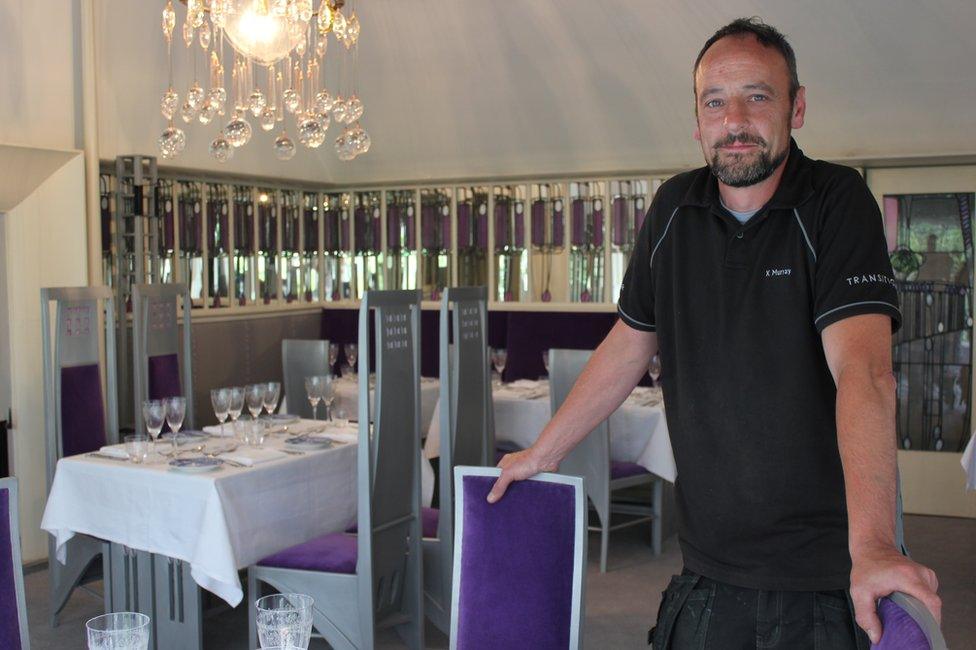
Kelvin says he has a new respect for the genius of Mackintosh's design

The size, proportions and material had to be exactly that of the originals, examples of which are kept at Glasgow University's Hunterian Museum.
"Naively we probably thought it was going to be easier than it was," says Kelvin.
"When people see the chairs they will hopefully understand you can't just go into a shop and buy these."

The original tea rooms had three sections and they are all being fully restored.
The Salon de Luxe was the best preserved of all the rooms.
However, some of its main features needed to be recreated.
When it opened the salon had a sculptural relief by Mackintosh's wife, renowned artist Margaret Macdonald, as its centrepiece.
Macdonald's original Gesso panel survives and is now preserved in Glasgow's Kelvingrove art gallery and museum.
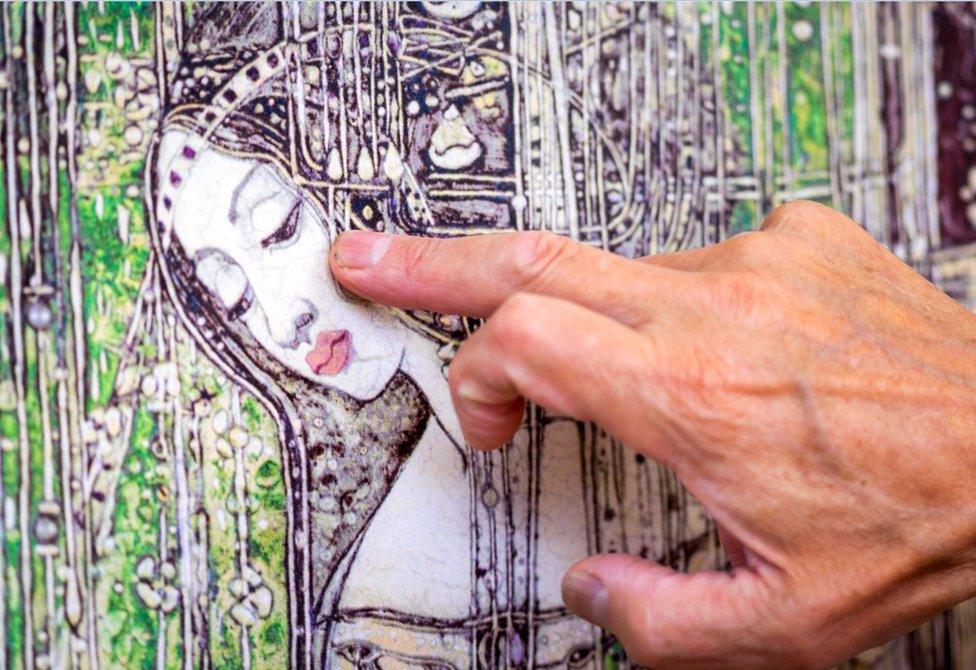
Margaret Macdonald's Gesso panel has been recreated by Dai and Jenny Vaughan

Celia persuaded artists Dai and Jenny Vaughan to come out of retirement to take on the job of recreating it.
Dai says: "It's the central feature of the entire tea room and Mackintosh believed that the soul and the heart of the interiors were the Gesso panels."
He says the technique that Macdonald used to create the panels was "absolutely unique".
"There was nothing else anywhere like it before her," he says.
Another ambitious project was making two enormous chandeliers to hang in the salon.
The chandelier design is mathematically complex and they have only had one black-and-white photo to work from.

The glass-makers were working from an old photograph to recreate the chandelier


The chandelier was recreated by a team of specialists

In Edinburgh, Ingrid Phillips had the responsibility for making the 200 solid glass shapes that form the key elements of the chandeliers.
The solid glass is full of bubbles or "seeds" that reflect the light.
Ingrid says: "As a glass-maker, as a technician, I spend most my life trying to melt glass without any seeds.
Creating Charles Rennie Mackintosh's luxurious chandeliers
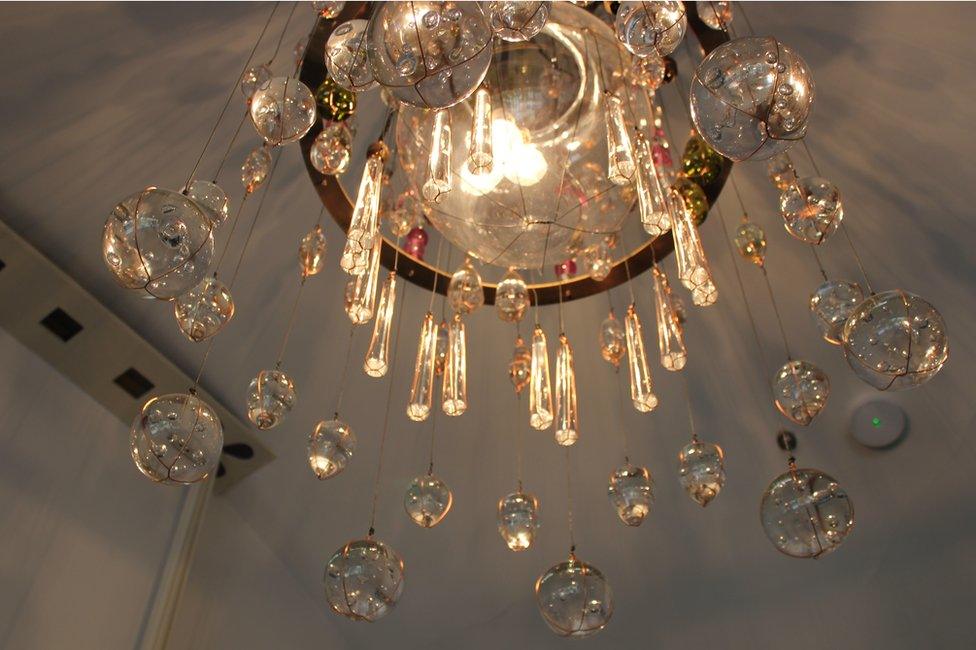
The recreation of the chandelier in the Salon de Luxe was an ambitious project
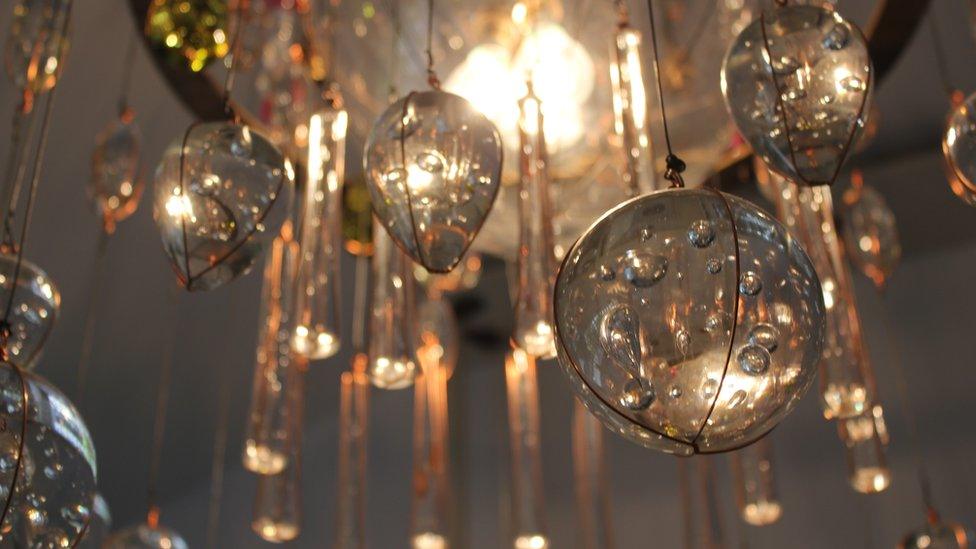
The solid glass in the chandelier contains "seeds" which catch the light in unpredictable ways
"The first prototypes were without seeds and were rejected so we had to find and develop a way of putting these small bubbles into the glass."
She says solid glass catches the light in a different way to blown glass.
"I don't really know what all the elements together will be like because no-one would be crazy enough to do that these days," Ingrid says.
"It's a very special project."
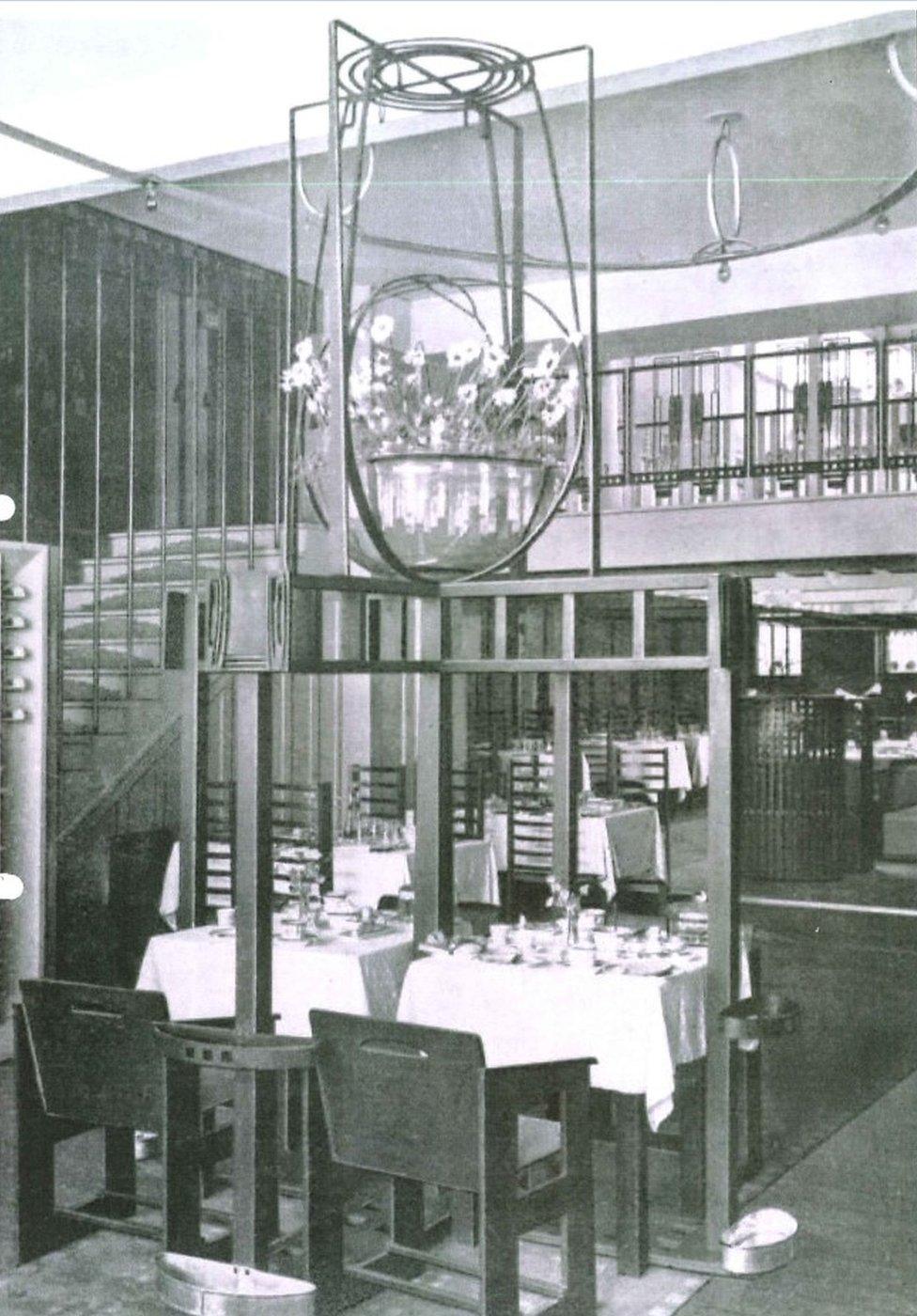
The Baldechino in the tea room in 1903

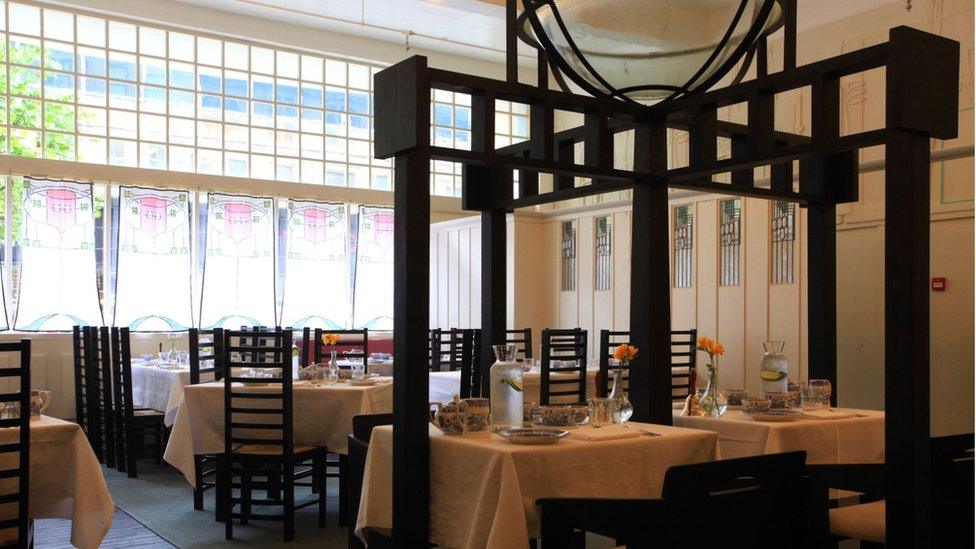
The Baldechino has been recreated for the new tea rooms

Pamela Robertson, professor emeritus, Mackintosh studies, at the University of Glasgow, said: "One of the challenges for recreating the interiors was the limited primary source material.
"There is a good group of artefacts that survive, some of them in situ, some in decorative art collections, so we have clear points of reference for the make of the contents of the Willow Tea rooms.
"But elements like the carpet in the Salon de Luxe, the leaded glass fire-screens, all of those elements have to be developed from scratch."
Recreating some parts of the tea room required detective work.
Celia says they discovered that the seats at the back were covered in purple velvet.
They tracked down the material via Margaret Macdonald's work basket and then found the same material in Italy.
The exact shade of off-white paint for the walls was found by analysis of fragments of existing paint within the building.

Who was Miss Cranston?
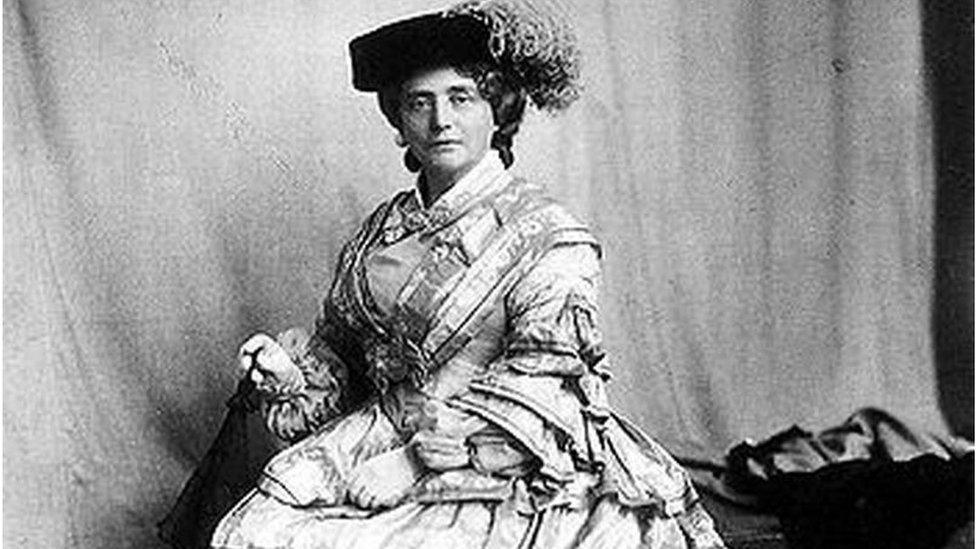
Catherine Cranston was the tea room queen
The Willow Tea Rooms are now recognised as a masterpiece of Mackintosh design but when they opened in 1903 they were branded with Miss Cranston's name and few knew much about the designer.
The Willow was Catherine Cranston's fourth establishment.
Her tea rooms were famous for their unique, modern design, using talented local artists to provide the premises with innovative and inspirational style.
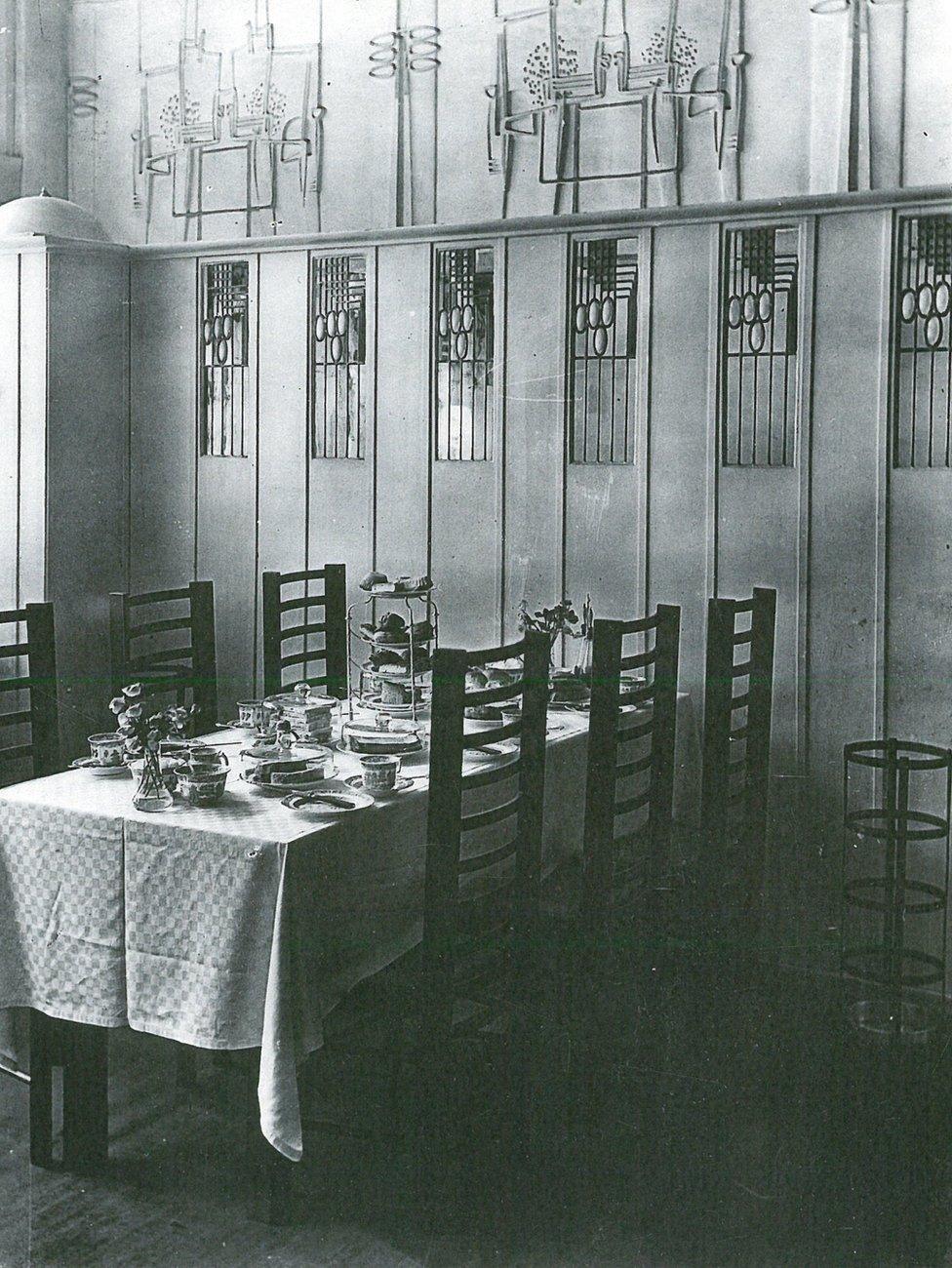

She was born in 1849 in Glasgow's George Square where her father was the proprietor of a hotel.
It was her brother Stuart Cranston who was first to get into selling tea.
In order to sell his tea leaves he would offer samples of the hot drink to potential customers.
He eventually moved to premises with tables, offering snacks to go with the tea drink, and the concept of the tea room was born.
As the Temperance movement gained in prominence and wealthy women began to have some degree of independence the idea of tea rooms took off. Stuart's sister Kate was keen to get in on the act.
Miss Cranston opened her first tearoom, the Crown Luncheon Room, on Argyle Street, in 1878.
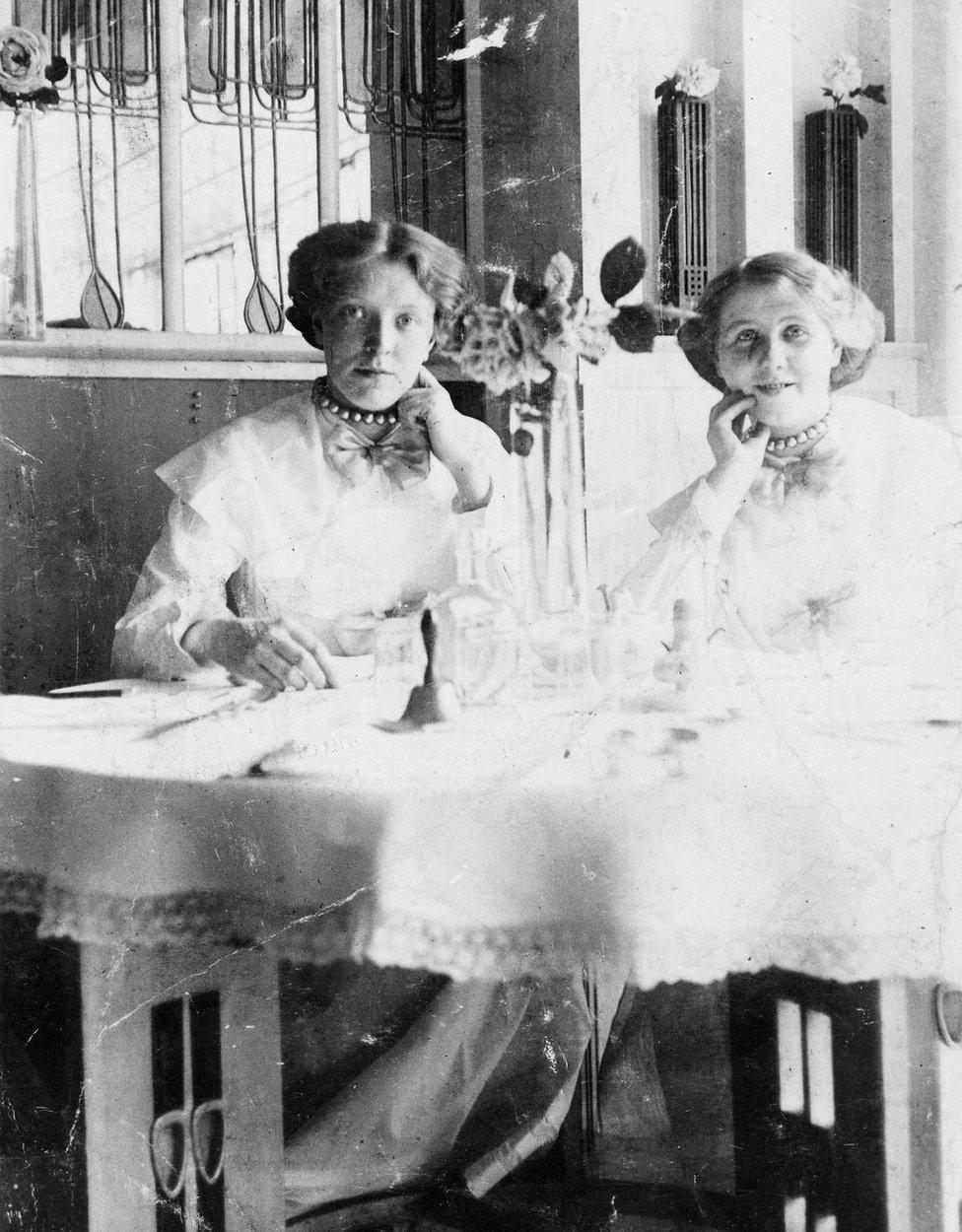
Two waitresses in the Room de Luxe

It was not until she opened her Ingram Street tearoom in 1888 that she first commissioned a young designer - in this case George Walton - to add extra interest.
According to expert Perilla Kinchin, her marriage in 1892 "turned on a tap of money" and Miss Cranston went on to open a third tea rooms in Buchanan Street, "on a much bigger scale".
It was when she decided to expand the Crown Tea Rooms in 1899 that she had Mackintosh design the furniture while Walton worked on the decoration and the fixtures.
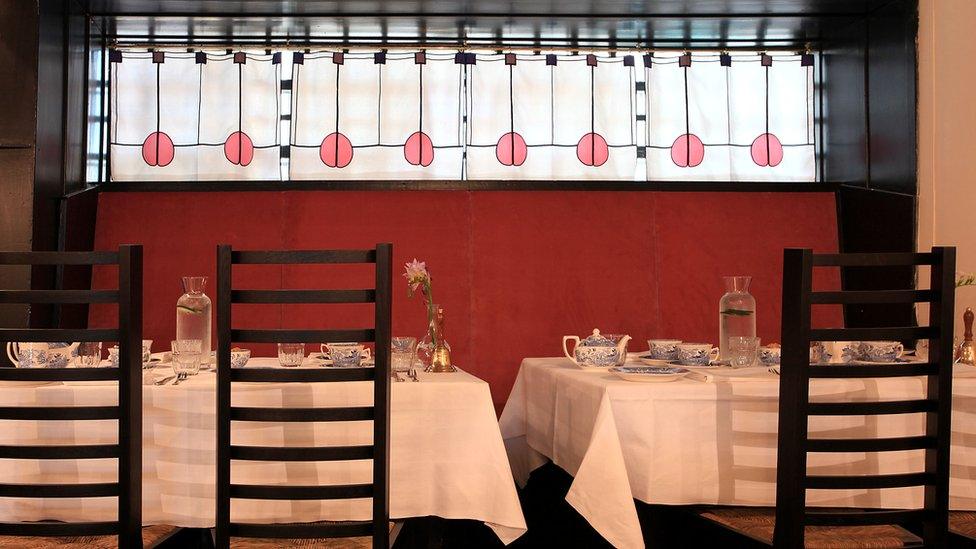
In 1900, Kate Cranston commissioned Mackintosh and Margaret Macdonald, to add a ladies' luncheon room and basement billiard room to Ingram Street.
Then in 1903 came the Willow Tea Rooms, a project that Mackintosh took complete design control of.
According to the newspapers of the time, the decoration of the Willow Tea Rooms "surpasses anything hitherto attempted by Miss Cranston".
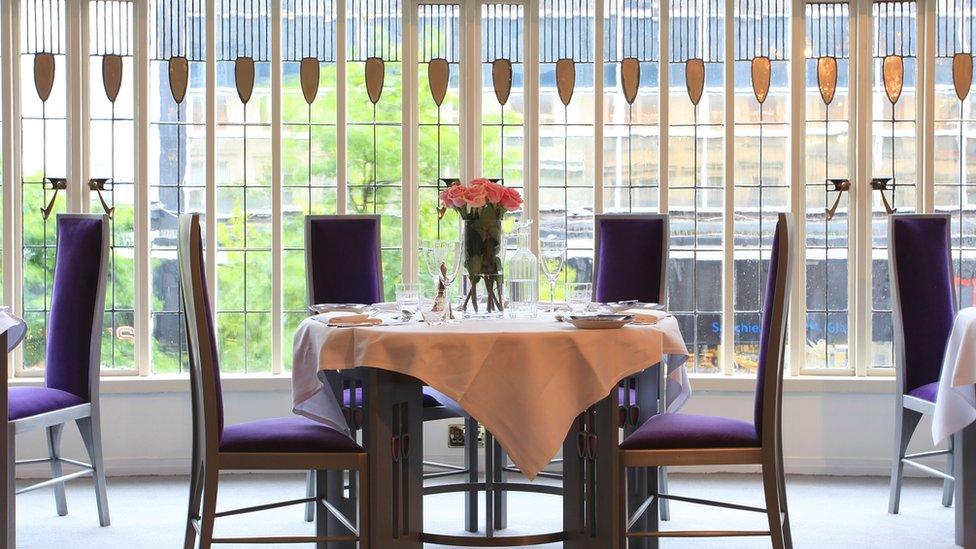
Ms Kinchin says: "She could see Mackintosh would give her that extra something she craved for her reputation."
The 1909 Who's Who of Glasgow's most important people contains just seven women among its 460 entries.
The only businesswoman is Kate Cranston.
Her success continued until the death of her husband in 1917 when she sold off her businesses.
Despite this the name of Miss Cranston remains a byword the artistic tea rooms she pioneered at the turn of the century.

Glasgow's Gaudi

According to Celia Sinclair, Mackintosh is to Glasgow as Gaudi is to Barcelona and Frank Lloyd Wright to Chicago.
He is the designer who best sums up its style and its outlook.
Kate Cranston's Willow Tea Rooms was where Mackintosh showed his flair to the public.
Celia's four-year journey to raise £10m and complete the restoration was not quite finished on time for the 150th anniversary of Mackintosh's birth on 7 June.
Parts of the building are now open and the trust is hoping to have the restoration complete by the end of August with an official opening in September.
The centrepiece will be Dai and Jenny's recreation of the Gesso panel in the Salon De Luxe.

Why is it called the Willow Tea Rooms?
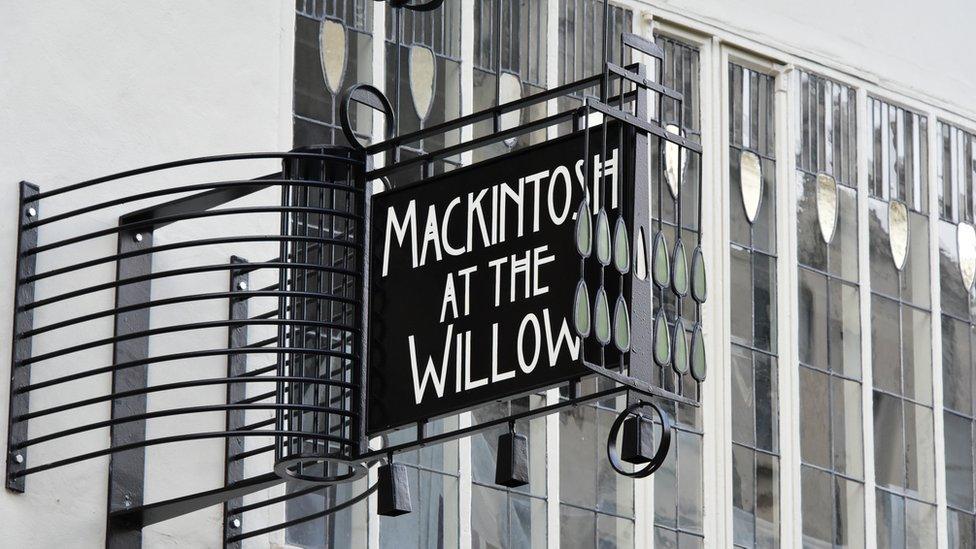
The tea rooms are on Sauchiehall Street, which at the turn of the last century was Glasgow's finest street.
The name of the street is thought to be a corruption of the Scots language phrase meaning meadow of the willows.
Dai Vaughan, who has recreated Margaret Macdonald's Gesso panel in the Salon de Luxe, says the sculptural relief shows a woman among willow trees.
"It just so happens that one of Charles and Margaret's favourite poets and painters was Dante Gabriel Rossetti, who has written this sonnet, All ye that walk in Willowwood," he says.

Mackintosh hub
The luxurious renovation of Charles Rennie Mackintosh's Tea Rooms
As well as the recreated tea rooms, Mackintosh at the Willow includes a visitor centre, an education hub and an exhibition space.
The trust will operate the building as a social enterprise, training disadvantaged young people to work in the hospitality industry.
The organisers expect about 360,000 visitors a year to come through the doors of tea rooms as Mackintosh's appeal continues to grow with locals and tourists.
"I want Mackintosh at the Willow to be here for a hundred years and more," says Celia Sinclair.
"It is so important to introduce young people to art and design, to encourage them to understand their heritage and to be proud of it."
Mackintosh's Tea Rooms will be shown on BBC Two Scotland at 21:00 on Tuesday 7 August.
- Published7 June 2018

- Published13 December 2016
